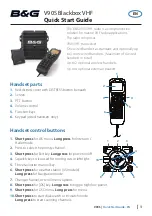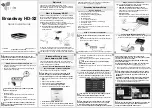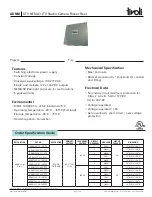
Transmitting
Press the LOW button to select low power output. When you wish to transmit, wait
until the channel is clear ("BUSY" not displayed), and squeeze the PTT switch on
the microphone. During transmission "ON AIR" is displayed in reverse letters to the
left of the S&PO box, and the bargraph shows relative transmitter power output.
Release the PTT switch to receive.
If more power is required, press the LOW button again. However, whenever
communication is possible with low power, keep the LOW button depressed to
minimize possible interference to other stations.
If using a version B or C (in Europe), press the BURST button on the MH-14A8
microphone, to transmit a 1750 Hz Burst Tone to access repeaters that require it.
Repeater Splits
The RPT button activates offset of the transmitting frequency from the receiving
frequency for plus or minus shift, as required for repeater operation.
To activate plus or minus split just press RPT: once for minus shift, or twice for plus
shift ("-" or "+" displayed above the 10 kHz frequency digit). When you press the
PTT switch to transmit (or the REV button to reverse transmit and receive
frequencies), the display will shift down or up by the programmed offset, if in band
(or else 'Err' is displayed). Pressing RPT again returns you to simplex operation.
The amount of repeater offset is programmed in the transceiver, and can be easily
reprogrammed as desired (default offsets are shown in the Model Chart on page 2).
If you have one or two repeaters in your area with non-standard splits, you can
program separate transmit and receive frequencies in memory as described later.
However, if most or all of the repeaters you want to work have a different split
offset from that programmed in the transceiver, you can reprogram the standard
offset (as controlled by the RPT button) instead.
- 220 -
















































